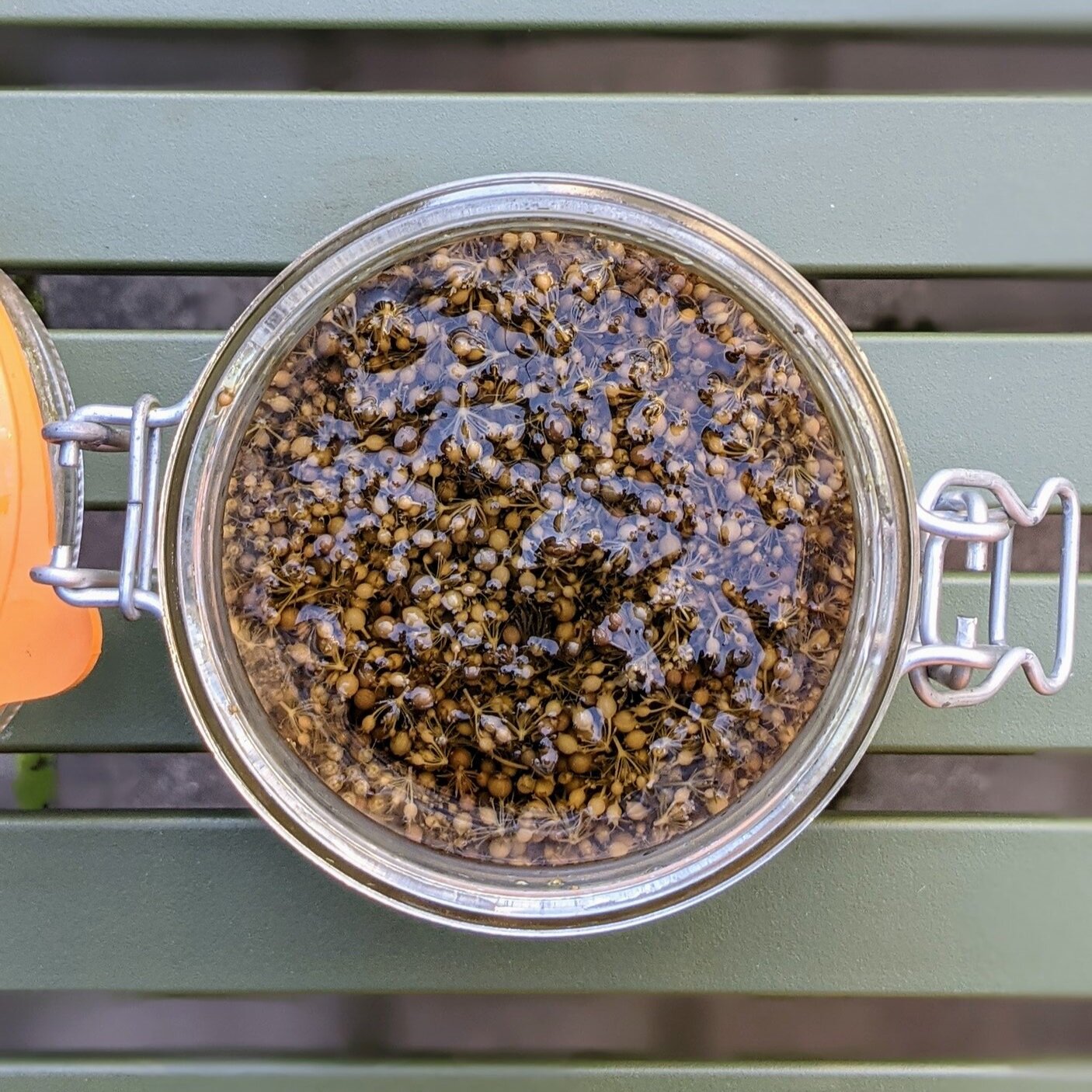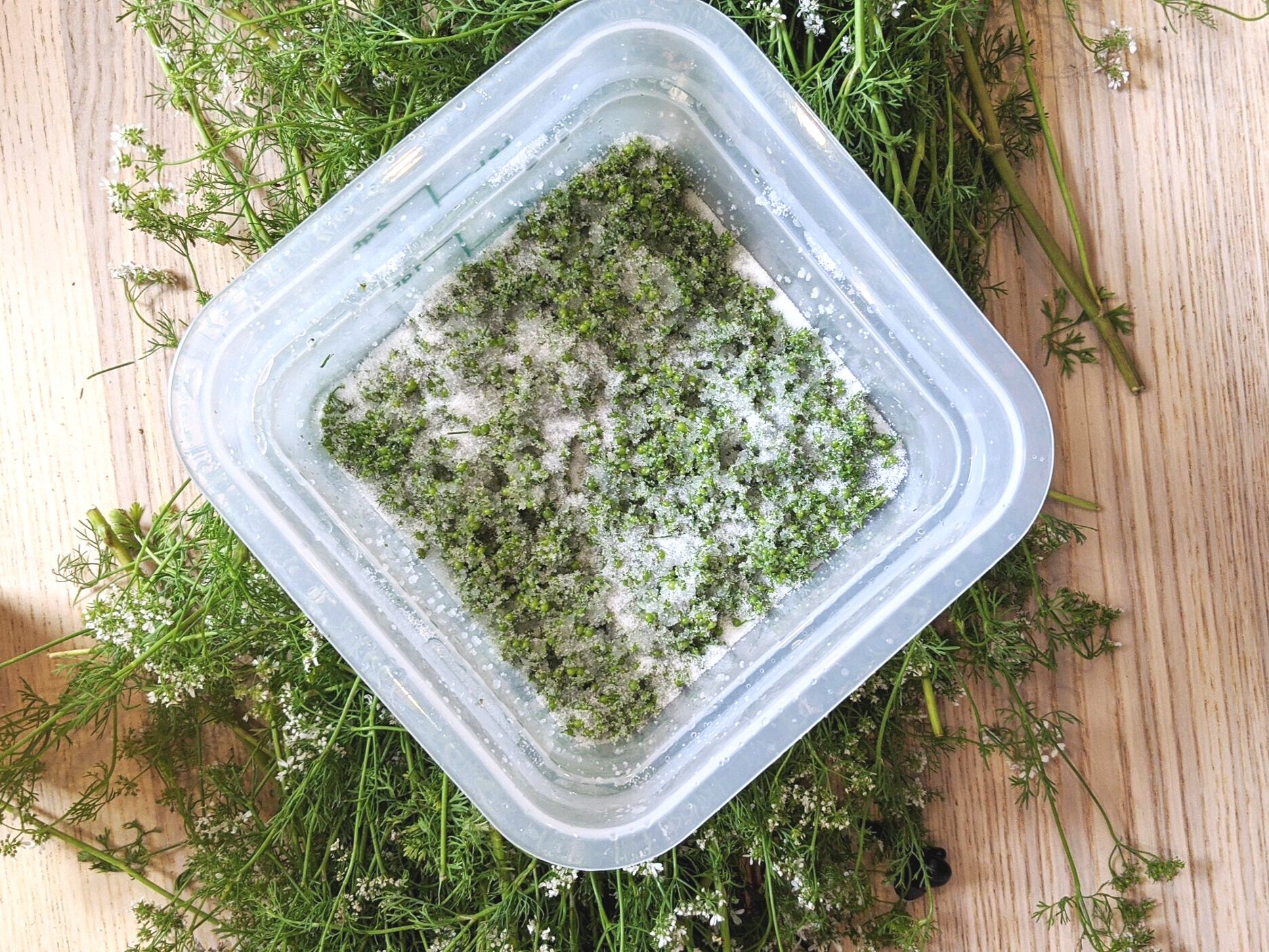Cilantro Capers Recipe
It turns out you can make capers out of just about anything. And that changes everything.
In this post, I’ll share a recipe for cilantro capers that you can repurpose for countless other ingredients.
What are capers?
The caper bush is a plant. Before it flowers, the flower buds from the caper bush are commonly picked, salted, and then pickled. We call the result, predictably, a caper. Capers are very common in Mediterranean cuisine, and I love to pull a Northern Europe and serve capers with schnitzel.
So when you hear something like “elderberry capers”, “ramson capers”, or “cilatro capers”, it’s kind of like hearing “chicken-fried steak”. There are no capers in cilantro capers, just like there’s no chicken in your chicken-fried steak. Instead, we’re applying the process typically applied to capers to another food.
Homemade CAPERS
When I discovered how easy it is to make capers from other ingredients (especially foraged ingredients), it changed the way I cook (and hike!). Now, I’m always on the lookout for young edible flower buds or berries to apply the caper treatment and increase the acidity and bite of seafood or pork dishes.
The best part is that the capers only get better with age, so the top-shelf of my fridge has a whole caper section: cilantro capers, elderberry capers, three-corner leek capers, carrot blossom capers, and caper capers. I keep them in these containers.
Bolting cilantro, with the first round of buds packed in salt.
Cilantro CAPERS Recipe
Cilantro buds are probably the easiest caper-substitute to come by in farmers markets, so I’ll share the recipe for them here. I use cilantro capers in ceviche — particularly my ceviche tostada — to meld the traditionally bright flavor of cilantro with the deep, complex flavors of aged vinegar products. But, you can apply this recipe to any edible flower bud or fruits (or even conifer tips!); just aim for young buds or berries (as they are less tough than ones with developed seeds).
Here are the steps:
Gather your flower buds or fruit. For this recipe, I bought bolting cilantro from the CUESA Farmers Market in San Francisco. It was covered in immature seeds (which are essentially young coriander).
In a sealable container, pack the flower buds or fruit in salt. With this step, you’re wicking the ingredient of moisture, so you really can’t have too much salt. I use like 50% of the ingredient’s weight in salt.
Store the container in the refrigerator. Every day or so, shake it to ensure that the salt is distributed. Do this for about three weeks.
Rinse the ingredient of all salt and put them in a glass container.
Make a pickling brine. To do so, boil 4 parts vinegar (I use champagne vinegar with 7% acidity), 1 part water, and 1 part sugar. Use enough quantities of each that you’ll be able to completely cover the ingredients in their glass container.
Pour the hot brine over the ingredients and close the container.
Add the container to the fridge.
And that’s it! As soon as it cools down, you’re good to go. But the taste will mature and improve over time. I am still using a batch from a year and a half ago, and it is much better than the batch I made a year ago.

